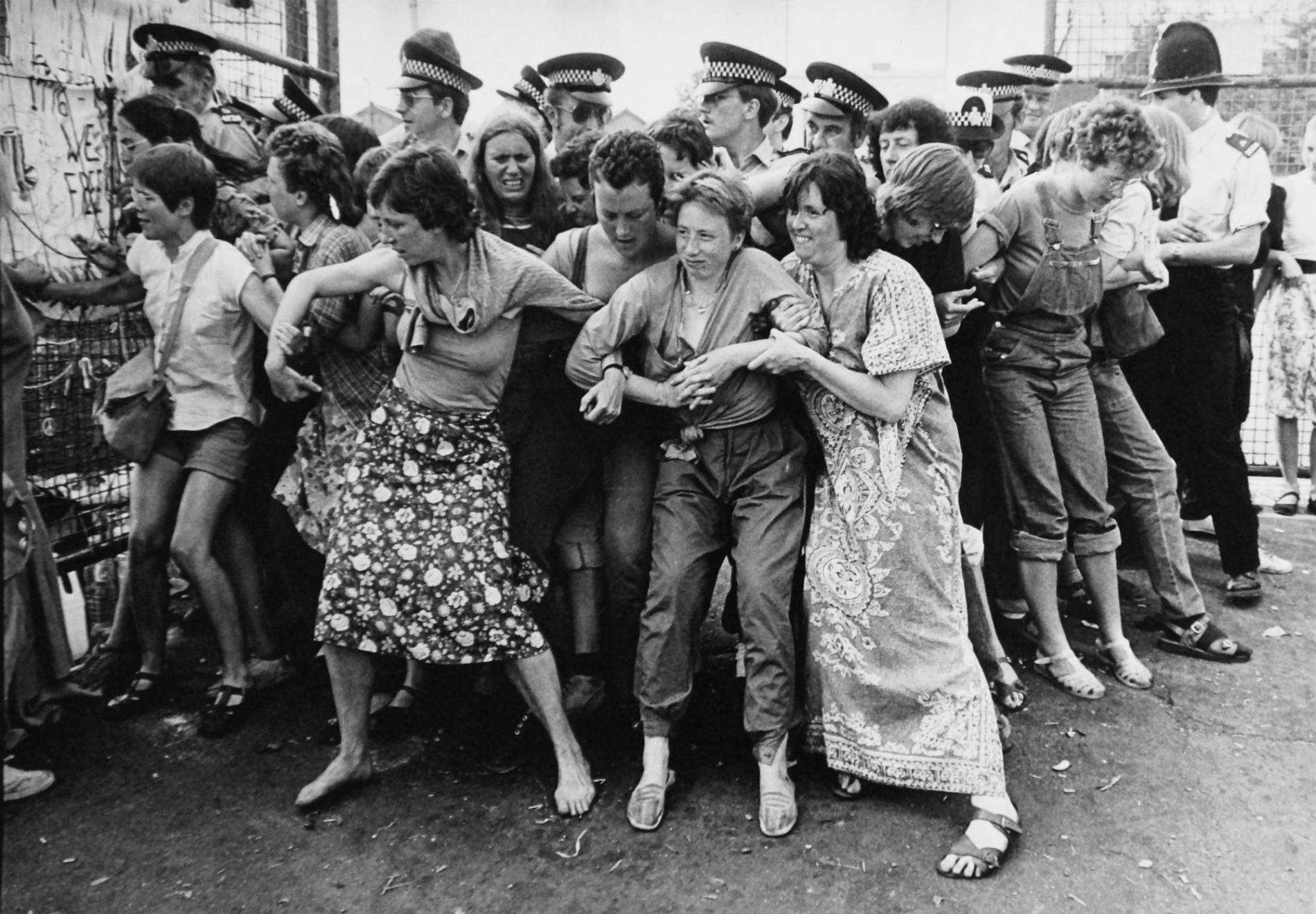By Professor Andrew Samuels: transcript of talk delivered in Japan in 2019
INTRODUCTION
In most countries, relationships between women and men continue to be studied and discussed in academic and clinical circles. One reason for it is because, whilst such relationships reflect social and cultural changes, they also drive them.
This is a talk about gender, psychology, politics and the relations between women and men. I have been writing about these matters for forty five years and I am still not sure what I think about them, or sure what is true and accurate.
(1) I dedicate my talk to two people. First, to my friend Professor Takao Oda, who brought me to lecture and teach in Japan many times. I still grieve his loss at a very young age. He taught me much about Shinto and about sand play.
The second person is one of my heroes, the British World and Olympic boxing champion Nicola Adams. She has been my muse in writing this talk. (1) Here she is:

Now, I present the structure of my talk:
- INTRODUCTION
- MEN AND POLITICS
- IN PRAISE OF GENDER CONFUSION
- JUNGIAN ANALYSIS AND GENDER: BEYOND THE FEMININE PRINCIPLE
- ANIMUS AND ANIMA – A PROPOSAL
- ON INTIMATE RELATIONSHIPS – THE PHENOMENON OF PROMISCUITY
All I know is that the debates around gender, whether within Jungian analysis, or outside Jungian analysis, or between Jungian analysis and other disciplines are numinous and fascinating. We are all caught up in them, with our particular culture, history and geographical location playing important parts.
During the talk, I will ask you in the audience to engage in four gentle experiential exercises. Please do not worry about them, but I wanted to give advance notice.
I will try to be careful not to give the impression that I am deeply familiar with contemporary Japanese culture. Yet I believe that my ideas may well strike a chord with a Japanese audience.
Why might my ideas from London strike a chord with you, here in Japan? I was very struck by the scandal in which the entrance examination results for medical school were falsified so that more men got in than was in fact the case. The picture is of the authorities apologising:

The BBC recently broadcast a report on the resistance by Japanese women to the compulsory wearing of high-heeled shoes in the office. The important thing was not the rule (which is often in use and we have things like that in Britain – but the new phenomenon of Japanese women’s resistance to it. In the picture, the woman in the meeting room is boldly and defiantly wearing trainers. Yet, we read in the newspapers how the Minister of Health and Labour defended the rule as ‘necessary’.

Next, I was also struck by the headline in this economic report: that in terms of economic gender inequality Japan is the worst in the G7. I didn’t know that.

I also learned that married women may not continue to use their maiden names.
Look, we have similar tensions in the West and we are in paroxysms over #MeToo and sexual harassment. But that’s not the point. The point is that I’ve become aware that Japan is in the middle of an intense national debate about gender. That was why, with the encouragement of Professor Konoyu Nakamura, I chose the topic for today’s talk.
(2) You may be asking why I focus on heterosexuality, and not include homosexuality, and do not enter into discussions about transgender? It is not that I am uninterested in these latter themes; indeed, I have written much about them, and am known publicly as an advocate for the rights of gay men and lesbians and, more recently, of transgendered people. But I think it is time for me, and maybe for the field, to return to the majority concern once again, and that is heterosexuality, whether we like it or not. In so doing, one need not be hetero-normative, as I will try to show. (2)
‘Gender’ has come to mean the arrangements by which the supposedly biological raw material of sex and procreation is shaped by human and social intervention. Gender and the passionate politics it spawns have given rise to traumatic divisiveness in our world – West, East, South and North. But, looked at with the eye of a psychoanalyst, the very idea of gender also has a hidden bridge-building function: it sits on a threshold half-way between the inner and outer worlds, and thus is already half-way out into the world of politics.
On the one hand, gender is a private, secret, sacred, mysterious story that we tell ourselves and are told by others about who we are. But it is also a set of experiences deeply implicated in and irradiated by the political and socioeconomic realities of the outer world. The notion of gender, therefore, not only marries the inner and outer worlds, but actually calls into dispute the validity of the division.
It is no wonder, then, that gender issues get so politicized as well as continuing to turn us on. Nor is it any surprise that contemporary cultural and political discussions focus so often on gender issues – like the proportions of men and women in the various arms of government, paternity (as opposed to maternity) leave, and the perennial and unsolved everywhere issue of equality of pay. Here is an iconic image of a women’s protest against the lodging of nuclear weapons in Britain on a US air force base. Reflect on the shape and tone of the bodies in such conflict….

MEN AND POLITICS
Leaving aside the actions of the women at the base, let’s focus on men for a moment. Why? Far too much psychological writing on gender focuses on women! Not many psychoanalysts write about men. Ironically, men have become the object of much political and psychological scrutiny in the West these days and are often seen as ‘the problem’. I say ‘ironically’ because, for millennia, men were the ones to scrutinize other groups and make them problematic: women, children, Blacks, the fauna and flora of the natural world. Men were a sort of papal balcony from which to survey the universe. But, in our age, a huge shift in cultural consciousness has taken place and new questions about men have arisen: men as (errant) fathers, men as (violent) criminals, men as (apathetic) citizens.
(3) The three underlying questions seem to be: Can men change? Are men powerful? Do men hate women? I will briefly discuss these questions and then, as an experiential exercise, ask you to discuss amongst yourselves and then vote what you think about the answers to the questions. (3)
Can men change? Men can change, of course, and yet the statistics about who typically takes care of children or does the washing-up show that they have not altered their behaviour very much. Why not? In the past few years, far too much time has been spent on irresolvable philosophical, metaphysical and quasi-scientific discussions about the relative importance of nature and nurture in the formation of gender identity and performance. Yet it may still be politically useful to consider the limitations on men’s capacity to change – not because of biological hard-wiring but because of psychological factors, in psychotherapy language ‘internalization’: A kind of psychological rather than biological ‘inheritance’ referring to the way men take in (internalize) images of manliness they see projected by the outside world and make them part of their inner world.
Exercise 1: Please discuss this question ‘Can men change? with your neighbours for a few minutes. Then we will vote on the question ‘Can men change?’ Those who say yes? Those who say no? Those who abstain?
Are men powerful? They certainly have economic power. But Black men, homeless men, men in prisons, young men forced or tricked into armies, disabled men, gay men – these are often vulnerable figures. We have serious trouble contemplating male economic power and male economic vulnerability simultaneously. We know, too, that men are scared of women. Never mind their fear of ‘the feminine’, what scares men is women. How can a man be said to be powerful if he is scared of women? And men are also frightened of other men. When contemplating the question of male power, what each of us has internalized is crucial in determining our answer – which means that personal experience and circumstances are decisive.
At the same time, the undoubted economic power that males possess could be made to serve progressive ends. If men and their formal institutions put just a tiny proportion of their economic power to benevolent use, it would make an enormous difference. Or if men got fully behind attempts to engage with the climate crisis that threatens us with apocalyptic destruction. So whatever changes may be taking place in the world of men could have immense political and social effects.
Exercise 2: Please discuss this question ‘Are men powerful?’ with your neighbours for a few minutes. Then we will vote on the question ‘Are men powerful?’ Those who say yes? Those who say no? Those who abstain?
Do men hate women? Here, the word ‘ambivalence’ comes to mind and, as we shall return to the concept later, its history will be useful. In 1910, when Jung’s superior, Eugene Bleuler, coined the word ambivalence, he meant it as a very serious symptom of schizophrenia. By the 1930s and 1940s, it had become the sign of psychological maturity according to psychoanalysis. Ambivalence is the capacity to have simultaneously hating and loving feelings towards the same person. So it is not only a problem, but an extremely hard-to-achieve aspect of psychological and social maturity.
Exercise 3: Please discuss this question ‘Do men hate women?’ with your neighbours for a few minutes. Then we will vote on the question ‘Do men hate women?’ Those who say yes? Those who say no? Those who abstain?
IN PRAISE OF GENDER CONFUSION
Most people are wary now of any individuals who seem too settled and sure in their gender identity and gender role. Think of the tycoon – so capable and dynamic, such a marvellous self-starter. Do we not know that, secretly, he is a sobbing little boy, dependent on others, perhaps mostly females, for all his feelings of safety and security? Or the Don Juan, talking incessantly of the women he has seduced, who turns out to have fantasies of being female himself and yearns to be seduced by another man? Or the woman who seems so fulfilled as a mother, yet privately desires to express herself in ways other than maternity, to come into another kind of power, to protest her cultural ‘castration’?
We have come to accept that behind excessive gender certainty lurk gender confusions like these. At the same time, even many people who are suspicious of too much gender certainty feel that it is basically a good thing to be pretty certain about one’s gender, to know for sure that, in spite of all the problems one has with being a man or a woman, one is indeed a man or a woman.
Yet the contemporary emergence and (sometimes) the acceptance of transgender means that another ideal altogether is needed to make sense of what we are experiencing in the muddled and mysterious world of early twenty-first-century gender relations and gender politics. Many people who come for therapy are manifestly confused about their gender identity. They may know how a man or woman is supposed to behave; but they are not sure that, given what they know about their internal lives, a person who is really a man or a woman could possibly feel or fantasize what they are feeling and fantasizing.
In Britain, one of our most famous sports journalists has transitioned from male to female. Quite a fantastic thing to do in his profession. And he writes: ‘Its OK to find this confusing’.
For these profound feelings of gender confusion to exist, there has to be an equally profound feeling of gender certainty in operation at some level – certainty based on the images presented by society. You cannot know the details of your confusion without having an inkling of the certitude against which you are measuring it. The client sobbing his little boy heart out knows very well that ‘real’ ‘manly’ tycoons exist out there and evaluates himself negatively as a result. Indeed, we could even say: no gender certainty, no gender confusion.
What this means is that, to a very great degree, people construct their gender confusion in relation to their gender certainty. If gender certainty is part of ordinary socialization, then gender confusion is equally constructed and not a deep personal wound or failure.
We need, therefore, to extend radically the by-now conventional insight that gender confusion lies behind gender certainty to see that gender certainty lies behind gender confusion. To the extent that gender confusion is usually taken as a mental health problem or neurosis, we are making a colossal mistake and even playing a destructive con trick on those supposedly suffering from it. The problem, in fact, is gender certainty.
We can look at how this operates for men specifically in Western societies. The clichéd idea that many men living in a feminism-affected culture feel confused about who they are as men takes on a rather different cast if we disown the idea of the desirability of gender certainty. From this angle, modern men are not so confused – or at least feeling confused is not their main problem.
Their problem is being afflicted with a gender certainty that is of no emotional use to them in their lives, and may be actually harmful to their potential. (When men’s movement leaders offer a certainty that seems to have been missing from the lives of men, they are unwittingly doing nothing more than bringing the unconscious gender certainty that was always there to the surface and reinforcing it. As that certainty came from the culture in the first place, there is nothing radical or scene-shifting about it at all.)
That’s enough on men. Now, the really interesting question is what to do with the feelings of gender confusion from which everyone suffers these days. It all becomes easier to live with if we replace the word ‘confusion’ with something that sounds more positive, like ‘non-binary’, ‘fluidity’ or ‘flexibility’ or even ‘androgyny’. But the word ‘confusion’ has merits because it comes closer to capturing what contemporary people feel about their gender identity.
In fact, gender confusion can contribute something valuable to political and social reform and change. If gender is a story we tell about ourselves that is half private and half public, it is also something upon which most polities have erected a welter of oppressive practices and regulations, mostly favouring men. Unfortunately, many Western governments may be turning back to a retrogressive form of gender politics fuelled by the certitudinous ‘family values’ of the past.
We psychotherapists and analysts need to access what is involved in gender confusion and gender certainty in a new language of fleshly images that speak more directly to people’s experience. Children seem to grasp this instinctively. When my son was 8 and my daughter 7, they taught me their theory of gender confusion, which has much more to do with self-image at depth than the more conventional, journalistic presentation of men as mixed up because of what women have managed to achieve.
They identified four equal categories: boy-boy, boy-girl, girl-girl and girl-boy. Anatomy is important but not decisive in determining who belongs to which category. So my daughter could refer to herself as a girl-girl or a girl-boy while my son oscillated between being a boy-girl and a girl-boy. Context was important – it depended on whom they were with. This system gets beyond a simplistic heterosexual-homosexual or feminine-masculine divide. In the adult world, as many (or more) boy-girls are heterosexual as are homosexual. The certitudes upon which homophobia rests are subverted by this way of speaking.
In fact, the celebration of confusion embodied by such children’s theories may be a more effective, interesting and radical way to enter gender politics than either the suspiciousness and judgementalism of the therapist or the nostalgia-fuelled return to certainty we see in some aspects of the men’s movement or the advocacy of an ersatz merger of men’s sociopolitical interests with those of women. Gender confusion unsettles all the main alternatives on offer.
I conclude this section on gender confusion by saying that nothing is more suspect than the complaint, fuelled by ‘victim envy’, that society now favours women over men. Nevertheless, as suggested earlier, it would be wrong to end by reasserting that males have all the power. Perhaps there isn’t a monolith called ‘men’ after all.

JUNGIAN ANALYSIS AND GENDER: BEYOND THE FEMININE PRINCIPLE
Now is the time to look at Jungian contributions to discussions about the matters I have been raising.Now the questions become:
Is there such a thing as innately ‘masculine’ or innately ‘feminine’ psychology?
Is there such a thing as a ‘feminine psychology’?
I’ll begin with a general discussion, then consider whether there is a feminine psychology that applies to women. In a moment, I’ll look at the ‘feminine’ in relation to men, and, after that, at femininity and masculinity as metaphors.
Males and females do have experiences that vary markedly. But it is a huge step from that to a claim that they actually function sufficiently discrepantly psychologically for us to speak of two distinct psychologies. The evidence concerning this is muddled and hard to assess.
For instance, the discovery that boys build towers and girls build enclosures when they are given bricks can be taken to show a similarity of functioning rather than difference (which is what is usually claimed). Both sexes are interested in their bodies and, possibly, in the differences between male and female bodies. Both sexes express that interest in the same way – symbolically, in play with bricks. Or, put in another form, both sexes approach the difference between the sexes in the same way.
The differences that we see in gender role and gender identity can then be looked at as having arisen in the same manner. The psychological processes by which a male becomes an aggressive businessman and a female a nurturing and submissive housewife are the same kinds of processes – and one should not be deceived by the dissimilarity in the end product.
What I have been describing is not a woman’s relation to an innate femininity or to an innate masculinity. Rather I am talking of her relation to the phenomenon of difference. Then we can consider the social or cultural structures erected on the basis of that difference. Each woman lives her life in interplay with such difference.
This leads at once to questions of gender role (for example, how a woman can best express her aggression in her culture) but these questions need not be couched in terms of innate femininity or innate masculinity, nor in terms of a feminine-masculine spectrum. Rather, they might be expressed in terms of difference.
In the example, the difference between aggression and submission needs to be seen as different from the difference between men and women! Or, put another way, whatever differences there might be between women and men are not illuminated or signified by the difference between submission and aggression.
Now, as a Jungian, I am of course aware that men are said to have access to the ‘feminine’, or to the ‘feminine principle’ and I used to think that such an unremittingly interior view was the jewel in the Jungian crown. Well, these days I am not so sure.
If we’re attempting to describe psychological performance, we have to be sure why terms with gendered associations and appellations are being used at all. Otherwise we end up with statements such as that ‘masculine’ aggression is available to women via their relation to the animus, or ‘feminine’ reflection in the man via his anima. But aggression is part of woman and reflection is part of man.
What is more, there are so many kinds of aggression open to women that even current attempts to speak of a woman’s aggression as ‘feminine’ rather than ‘masculine’ still bind her as tightly as ever. Let us begin to speak merely of aggression. Gender engenders confusion – and this is made worse when gender terms are used exclusively in an inner way. When we speak of ‘inner’ femininity in a man, we bring in all the unnecessary problems of reification and substantive abstraction that I have been describing. We still cannot assume that psychological functioning is different in men and women, though we know that the creatures ‘man’ and ‘woman’ are different.
The question of ‘difference’ brings us to a point where we can play back these ideas into analytical psychology. From Jung’s overall theory of opposites, which hamstrings us by its insistence on contrasexuality (‘masculine’ assertion via the animus, etc.), we can extract the theme of difference. The notion of difference, I suggest, can help us in the discussion about gender. Not innate ‘opposites’, which lead us to create an unjustified psychological division expressed in lists of antithetical qualities, each list yearning for the other list so as to become ‘whole’. A marriage made on paper.
So what I am suggesting is that in both the collective, external debate about gender characteristics and the personal, internal debate about gender identity, the question of ‘masculine’ and ‘feminine’ is best left in suspension.
It is probably fair to say that post-Jungian analytical psychology has become preoccupied with the ‘feminine principle’. Here, I am not referring to the writings on women and ‘feminine psychology’ by Jung and his early circle of followers. The problems with that body of work are well known and often repeated. But in the 1970s and 1980s, mainly in the United States, women writers in analytical psychology have set out to revise, or revolutionize, the early work. Such writers are struggling to be ‘post-Jungian’ in their attempt to critique those of Jung’s ideas that seem unsatisfactory or just plain wrong without dismissing Jung altogether.
The reason why there has been a concentration on the ‘feminine principle’ in recent Jungian writing is that it has provided a means to celebrate the specificity of women’s identity, life, and experience. In addition, having the notion of a ‘feminine principle’ in mind helps to make a critique of culture out of personal confrontations with it. The basic desire of feminists who are involved in Jungian psychology has been to refuse and refute the denigration of women that is perceived in analytical psychology, to bring the feminine gender in from the condescending margins, and to promote an alternative philosophy of life to that expressed in the power institutions of a male-dominated society.
Taken as a whole, and I realize I am generalizing, feminism which draws on Jung’s ideas stands out from other varieties, with which I feel more in sympathy, in two main ways. Both of these stem from Jung’s approach, resist eradication, and cause great difficulties. It is assumed that there is something eternal about femininity and, hence, about women; that women therefore, display certain essential transcultural and ahistorical characteristics; and that these can be described in psychological terms. What is omitted is the on-going role of the prevailing culture in the construction of the ‘feminine’ and a confusion develops between what is claimed to be eternal and what is currently observed to be the case.
It is here that the deadweight of the heritage of archetypal theory is felt. Jung assumed that there is something eternal about women and, hence, about femininity. As the feminist Jungian analyst Polly Young-Eisendrath writes: ‘Certain beliefs about difference – for example, about gender and racial differences – have influenced our thinking about the meaning of symbolic representations, behaviours, style, and manner of people who are alien to the roots of our psychology in Switzerland’.
I would like to say what I find problematic in the many attempts to locate eternal models or maps for the psychological activity of women in mythology and goddess imagery. When such imagery is used as a kind of role model or resource for a woman in her here-and-now pain and struggle, which is one thing. But when it is claimed that such endeavour is a reclamation of qualities and characteristics that once prevailed in human society only to be smashed by the patriarchy, then that is altogether more suspect. For it is a highly disputed point, to put it mildly, that such an era ever existed.
Could this be a case of taking myth too literally? And isn’t there a hidden danger here? For if men were to claim that they are in the direct line of psychic inheritance of the characteristics and qualities of gods and heroes, then we’d end up with the status quo, with things just as they are, for they couldn’t be any other way. As far as role-modelling and resource provision goes, surely any woman, even or especially an analyst, can perform this task for another woman.
The search for hidden sources of authority is a project constellated by what is seen as a flawed cultural tradition. But there may also be a ‘flaw’ in the project itself, for such a search demonstrates the very sense of weakness and lack of authority which it seeks to overcome. Engaging in a rivalrous search for female archetypes could lead to a new set of restrictions on female experience, as several writers have observed.
Trawling the recent literature, I have been struck by the massiveness of the feminine problematic, signified in numerous phrases such as: feminine elements of being, feminine modality of being, femininity of self, feminine ways of knowing, feminine authority, feminine assertion, feminine reflection, feminine dimensions of the soul, primal feminine energy pattern, feminine power, feminine response, feminine creativity, feminine mysteries, feminine body, feminine subjectivity, feminine transformation. I could have quadrupled the list; for ease of reference, I have subsumed all these terms under the general heading of the ‘feminine principle’.
Something oppressive has come into being – not, repeat not, because what is claimed as the content of the ‘feminine principle’ is oppressive but because celebrating the feminine has raised it to the status of an ego-ideal, leading to a simple and pointless reversal of power positions. Further, perhaps it is the shadow of feminism generally to make women feel inadequate when they don’t come up to its mark – or cannot emulate notable feminist figures. (4)
ANIMUS AND ANIMA – A PROPOSAL
There is an apparent consensus going around that everyone – male and female – has both animus and anima. Well, maybe. But what I want to propose is different to this trendy idea.
I say that animus and anima images are not of men and women because animus and anima qualities are ‘masculine’ and ‘feminine’. No – rather, for the individual woman or man, anatomy is a metaphor for the richness and potential of the ‘other’. A man will imagine what is ‘other’ to him in the symbolic form of a woman – a being with another anatomy. A woman will symbolize what is foreign to her in terms of the kind of body she does not herself have. The so-called contrasexuality is more something ‘contra-psychological’; anatomy is a metaphor for that.
But to fully benefit from his ideas of animus and anima these have to be subjected to a post-Jungian critical revision. Classical Jungian notions such as eternal and internal masculinity and femininity, which lead to the assumption of essential differences between the sexes, are not the most fruitful way to use Jung’s ideas. Instead, animus and anima represent the expansion of the roles available to both sexes. We can happily consider aggressive and assertive woman (such as athletes and activists) and nurturing and receptive men (fathers). Hence, we transform a traditional and repressive theory into something that supports an expansion of roles and behaviours for women and for men. Animus and anima become motors of progressive change.
But anatomy is absolutely not a metaphor for any particular emotional characteristic or set of characteristics. That depends on the individual and on whatever is presently outside her or his conscious grasp and hence in need of being represented by a personification of the opposite sex. The difference between you and your animus or anima is very different from the difference between you and a man or woman.
The whole gender debate suggests that we Jungians join with those who question whether heterosexuality itself should be taken as innate and therefore as something fundamental and beyond discussion, or whether it, too, has a non-biological dimension. Freud’ s perception was of an innate bisexuality followed later by heterosexuality.
Jung’s view was that man and woman are each incomplete without the other: heterosexuality is therefore a given. In this sense he differs from Freud’s emphasis on bisexuality as the natural state of mankind. In Freud’s approach, sexual identity arises from the enforced twin demands of reproduction and society. What I have been arguing shifts the concept of bisexuality from something undifferentiated (polymorphous or polyvalent) into a vision of there being available to all a variety of positions in relation to gender role.
If discriminations like these are not made, then those analytical psychologists who espouse the idea of innate, body-based, sex-specific psychologies, find themselves lined up with those groupings often referred to as the ‘New Right’ or conservative or traditional. This is the case in Britain and the US. Here, too, isn’t that possible? New Right assumptions about sex-specific psychology tend to be based on appeals to tradition and often have a romantic appeal but those of us working therapeutically need to be aware of the way in which the assumptions can be used to promote the notion of ‘order’ and of how women’s activities, in particular, are decisively limited. Men win – again.
ON INTIMATE RELATIONSHIPS – THE PHENOMENON OF PROMISCUITY
What happens in private between the sexes is also an important source of developments in society. Sexuality, including fantasy, may be viewed as proactive and as a motor of resistance to unjust and oppressive conditions both for women and men.
For this reason I want to focus on sexual promiscuity.
Back in the 1960s, in the summer of love, we in the West didn’t talk about ‘promiscuity. The reference was to ‘non-possessive relating’ or ‘alternative families’ or ‘free love’. In the talk. That is to say, promiscuity was viewed as a political statement.
It is still hard to find much contemporary discussion of promiscuity in a Western context that does not take a negative line. The word that appears over and over again in the context of sex is ‘casual’. Casual sex is the term with which we are now most familiar.
Exercise 4: To be done on private. I ask you to think of the last time you experienced absolute and total lust for another person (define lust as you like). What happened? If you acted on it, what feelings did you have at the time, and now? If you didn’t act on your experience of lust, what feelings did you have at the time, and now?
Promiscuity is the background phenomenon that since the late nineteenth century has underpinned numerous discussions that couple politics and sexuality. Conventional accounts of intimate relations praise them when they radiate constancy, longevity and fidelity. But more radical accounts suggest that ownership and control of the other are also critically important. The best known of these was Friedrich Engels’ 1884 OriginoftheFamily,PrivatePropertyandtheStatein which he states that the first class opposition that appears in history coincides with ‘the development of the antagonism between man and woman in monogamous marriage’ especially in ‘the possessing classes.’
Today’s monogamy may be seen as chiming and co-symbolizing with neo-liberal market economics and with implicit and explicit claims by powerful Western countries and corporations to ‘possess’ planetary resources. Monogamy, it can be argued, is therefore implicated in a wide range of injustices – environmental, economic and ethical. Now, this point can be made with greater or lesser passion, for monogamy certainly has its merits and cannot only be reduced to the level of political tyranny.
The corollary – that non-monogamy is correlated with sustainability, equality and social justice – remains, perforce, untested though hugely suggestive. Ownership is a tendentious perspective on relationships and geopolitics alike; but public strategies for sustainability, such as the principle of ‘global commons’, can be seen to co-symbolize with non-monogamy in the private sphere.
If we consider, for example, the Midrashic story of Lilith we can understand the possible relations between politics and sexual behaviour a bit more fluidly. Lilith was Adam’s first consort who was created from the earth at the same time as Adam. She was unwilling to give up her equality and argued with Adam over the position in which they should have intercourse – Lilith insisting on being on top. ‘Why should I lie beneath you’ she argued, ‘when I am your equal since both of us were created from dust?’ Adam was determined and began to rape Lilith who called out the magic name of God, rose into the air, and flew away. Eve was then created. Lilith’s later career was – not surprisingly – as an evil she-demon who comes secretly to men in the night, hence being responsible for nocturnal emissions. She was also a murderer of newborns. But in the end, after the destruction of the Temple, Lilith enters a relationship with God as a sort of mistress.
My point is that this kind of material can be taken as much as an expression of the influence of the sexual on the political as the other way around. The experience people have of the sexual is also a motor of their politicality, political style and political values. Sexual experience and its associated imagery express an individual’s psychological approach to political functioning.
I think this is illustrated by the image of the Palestinian paramedic Razan Ashraf al Najar in Gaza in 2018 running towards danger to treat a wounded man. She was shot by an Israeli sniper.

PROMISCUITY AND PSYCHOTHERAPY/ANALYSIS
With these thoughts in mind, I want to turn to our own profession of psychotherapy, both in and of itself and as representative of the wider culture. My accusation is that, when it comes to promiscuity, psychotherapy as an institution and many (but not all) psychotherapists as individuals are hypocritical. In terms of the etymology of the word ‘hypocrisy’, they are play acting or feigning something. As well as scoring points, I am interested in probing this phenomenon.
It is significant that sex outside of relationship is largely untheorized by analysts and therapists – or, if there is a theoretical position taken, it is invariably in terms of psychopathology, of an alleged fear of intimacy, problems in attachment (‘ambivalent attachment’) and relationship, perversion and so on. There is a contemporary absence of consideration of what my late friend the relational psychoanalystMuriel Dimen referred to as ‘sex-as-force’.
I think it is interesting to ask whether there might be something in the fundamental thinking or set-up of psychotherapy that leads to a carnality-averse conservatism. We have learned, mostly from Foucault that, for every majority discourse, there is likely to be a subjugated minority discourse. In psychotherapy – as in society – the majority discourse is relational. Hence, the subjugated minority discourse will be the opposite of relational; in the language of this talk, promiscuous.
I have wondered if the silence of psychotherapists on the topic of promiscuity reflects a kind of sexual horror – sotheytranslateeverythingintoadiscourseofrelationalityinwhich‘persons’getsplitofffrom‘sex’.
Putting these ideas – of hypocrisy and a subjugated non-relational discourse – together, exposes the secret moral conservatism of numerous psychotherapeutic clinicians compared to their often very different sexual behaviour as persons. We could begin to understand this more deeply by seeing it as envy on the part of the therapist of the sexual experimentation and out-of-order behaviour related to them by their clients.
The matter comes to a head when psychotherapists engage with infidelity (‘cheating’) on the part of their clients. Whilst not denying that some therapists, particularly couple therapists, understand cheating as a systemic phenomenon, the overall psychotherapeutic take on the matter is that it is a symptom of something else, some problem in the cheat, usually of a narcissistic kind. The cheated upon usually feels immense pain and the cheat often feels great guilt. These are strong affects for the therapist to engage with. Hence, unsurprisingly perhaps, what we see in the majority of instances is a counter-resistant valorization of relational longevity and an utterly literal understanding of ‘object constancy’ at the expense of relational quality. Provided you are in a longstanding relationship, you are, to all intents and purposes.
Is that true?!
To end, I will simply put up a slide that repeats the structure of the talk.
INTRODUCTION
MEN AND POLITICS
IN PRAISE OF GENDER CONFUSION
JUNGIAN ANALYSIS AND GENDER: BEYOND THE FEMININE PRINCIPLE
ANIMUS AND ANIMA – A PROPOSAL
ON INTIMATE RELATIONSHIPS – THE PHENOMENON OF PROMISCUITY
Thank you for listening.
The above talk was delivered at the conference entitled ‘Jungian Psychology: East and West, encountering differences’ at Otemon Gakuin University, Osaka, Japan on November 2-3, 2019
*This transcript posted at Gynocentrism.com with permission from the author.